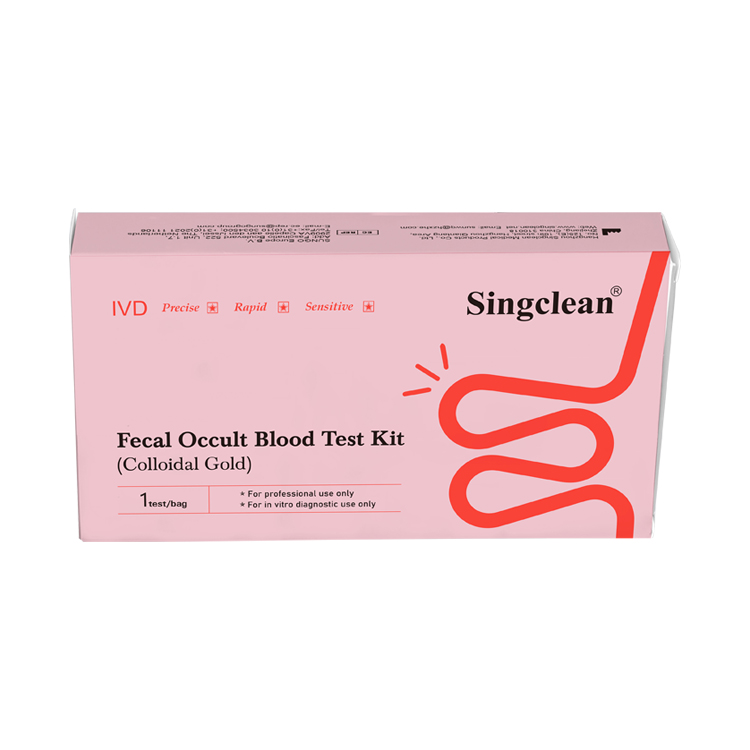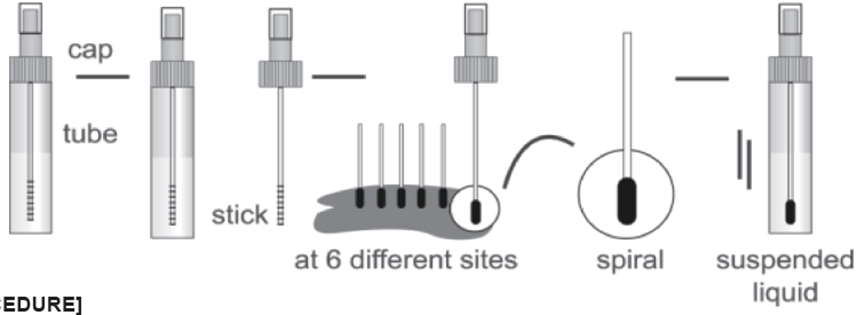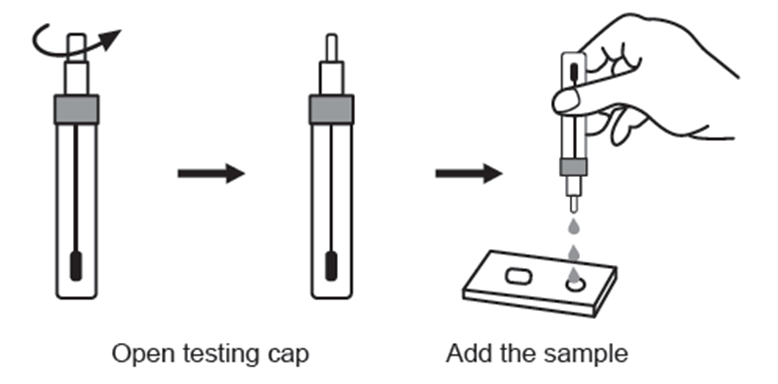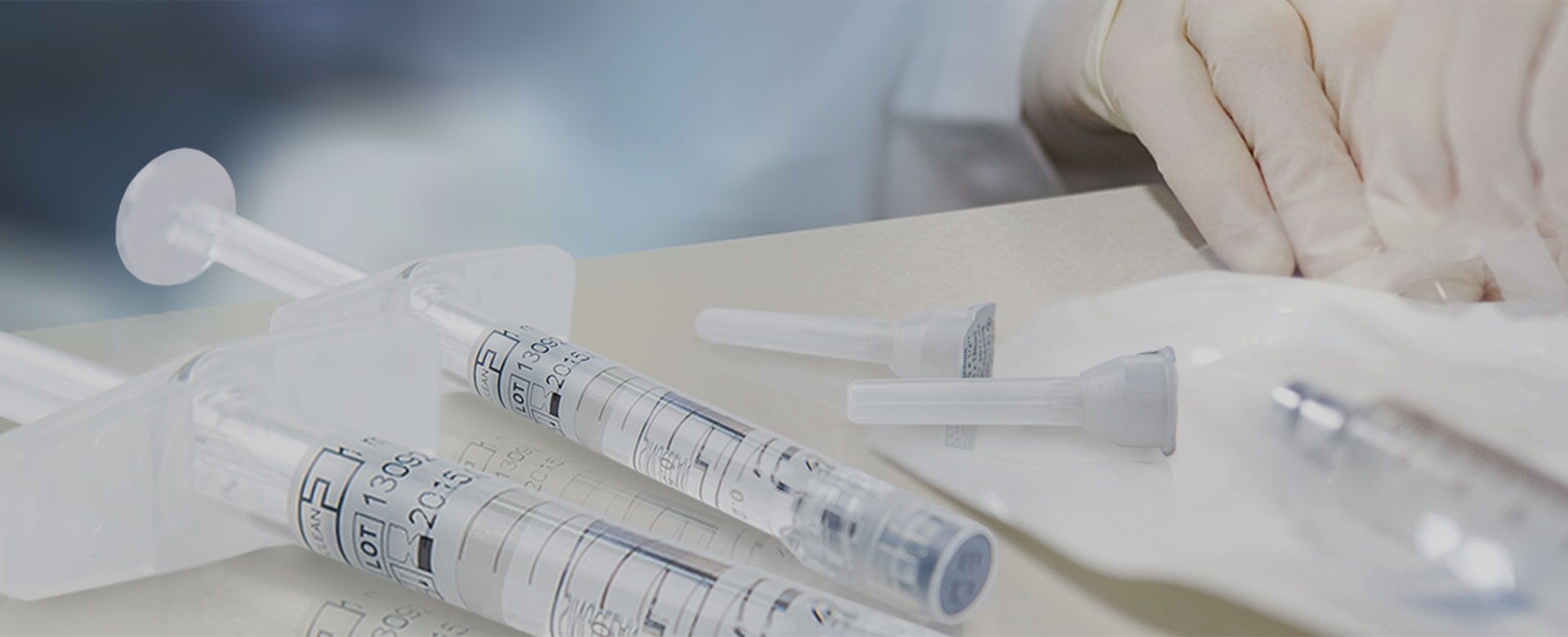
Fecal Occult Blood Test Kit (Colloidal Gold)
Instructions for Use
•For professional use only •For in vitro diagnostic use only
Please read this IFU carefully before use!
CE
[INTENDED USE]
Fecal Occult Blood Test Kit (Colloidal Gold) is a rapid chromatographic immunoassay for the qualitative determination of Fecal Occult Blood. It is used for the aid to early diagnosis of gastrointestinal bleeding.
[INTRODUCTION]
Fecal occult blood refers to a small amount of bleeding from the digestive tract, red blood cells are destroyed by digestion, and there is no abnormal change in the appearance of the stool, which cannot be confirmed by the naked eye or microscopy. In the early stage of clinical gastrointestinal malignancy, 20% of patients can have a positive fecal occult blood test, and the positive rate of fecal occult blood in advanced patients can reach more than 90%, and it can be persistently positive, gastrointestinal bleeding, and fecal occult blood test in patients with peptic ulcer is mostly intermittently positive. Dysentery, rectal polyps, hemorrhoidal bleeding, etc. can also cause more red blood cells to appear in the stool, resulting in a positive fecal occult blood test. Therefore, fecal occult blood test can be used as an important test for the detection of gastrointestinal bleeding caused by various causes and the early screening of gastrointestinal malignant tumors, and is an effective method to detect fecal occult blood.
[PRINCIPLE]
The Fecal Occult Blood Test Kit (Colloidal Gold) is a colloidal gold immunochromatographic assay.
During the test, when the sample contains hemoglobin, it will react with the labeled Hb monoclonal antibody to form a complex, and under the action of chromatography, the reaction complex moves forward along the nitrocellulose membrane to the detection area, and is captured by the Hb monoclonal antibody on the nitrocellulose membrane, and finally forms a
burgundy line on the detection area, and the result is positive. When the sample does not contain hemoglobin, there is no burgundy line in the detection area, and the result is negative.
The test contains an internal control (C band) which should exhibit a burgundy colored band regardless of the color development on any of the test bands. Otherwise, the test result is invalid and the specimen must be retested with another device.
[MATERIALS PROVIDED]
Test Cassette
Sample collection tube with extraction buffer
Instructions for use
[MATERIALS REQUIRED BUT NOT SUPPLIED]
Timer
Disposable specimen container
[STORAGE AND STABILITY]
●Store in the sealed pouch at 4°C to 30°C. The validity period is 24 months.
●The test is stable through the expiration date printed on the sealed pouch.
●The test must remain in the sealed pouch until use.
●After opening the sealed pouch, use the test as soon as possible within 60 minutes.
●Do not freeze.
●Do not use beyond the expiration date.
[SPECIMEN COLLECTION]
Patient Limitations
A specimen should not be collected from a patient with the following conditions that may interfere with the test results:
1. Menstrual bleeding
2. Bleeding hemorrhoids
3. Constipation bleeding
4. Urinary bleeding
Specimen collection
●Remove cap and stick from the tube. Poke the stick into the feces sample (approximately 8~20mg) six times at different sites.
●Put the stick back in the tube, tighten the cap and shake well.
NOTE:
●Fresh feces specimen must be collected in a clean and dry container.
●Perform the testing immediately after the specimen collection.
●Handle all the specimens for testing as if potentially infectious.
●Specimen should be collected fresh feces, not mixed with urine, disinfectant and sewage.

[TEST PROCEDURE]
1) Shake well the Sample collection tube with feces specimen;
2) Open pouch and place test device on a flat surface;
3) Open the tip cover of the sample collection tube and squeeze tube to dispense 3 drops (about 100μL) into sample well. Read result at 5 minutes. Do not interpret result after 10 minutes.

[INTERPRETATION OF RESULTS]

[LIMITATIONS]
1. This reagent is only used for in vitro diagnosis and is suitable for the detection of human hemoglobin in feces.
2. Specimens collected during menstruation, hemorrhoidal bleeding, hematuria, oral and nasal bleeding, false positives may occur.
3. This reagent is a qualitative test, and the content of human hemoglobin in the sample cannot be determined.
4. If the digestive tract is bleeding intermittently, a negative result may occur during the intermittent period.
5. If there is very little upper gastrointestinal bleeding, a negative result may occur. When tarry stool occurs and the hemoglobin concentration exceeds 2000ug/mL, a false negative result may occur, and the sample stool should be fully diluted before testing.
6. This reagent is suitable for primary screening detection, and when confirmation is required, it is recommended to use retrospective medical history, endoscopy and some other examination methods for further diagnosis.
[PERFORMANCE CHARACTERISTICS]
1. Sensitivity:
The sensitivity of the test is 100ng/mL.
2. Specificity:
Fecal Occult Blood Test Kit (Colloidal Gold) is specific for human hemoglobin. Hemoglobin from horse, pigs, fish, beef, chicken, rabbit, rat, goat, and mouse do not react with Fecal Occult Blood Test Kit (Colloidal Gold). Aqueous extracts of broccoli, cantaloupe, cauliflower, horseradish, parsnip, raw turnip, and red radish were tested with and without human hemoglobin present in the samples. Additionally, a 20mg/mL solution of horseradish peroxidase,with and without human hemoglobin present, was also tested. No interference was observed. Toilet bowl deodorizers/fresheners, cleaners also did not interfere with Fecal Occult Blood Test Kit (Colloidal Gold).
3. Reproducibility
The results of internal standard at the same concentration were consistent and the chromaticity was uniform.
[WARNINGS AND PRECAUTIONS]
1. For in vitro diagnostic and professional use only.
2. Read instructions for use carefully before performing this test.
3. Do not use the test beyond the expiration date on the pouch label.
4. Use immediately after opening the pouch.
5. For single use only.
6. Use a new specimen collection tube for each test to avoid cross contamination of fecal samples.
7. Do not use if pouch is torn or damaged.




